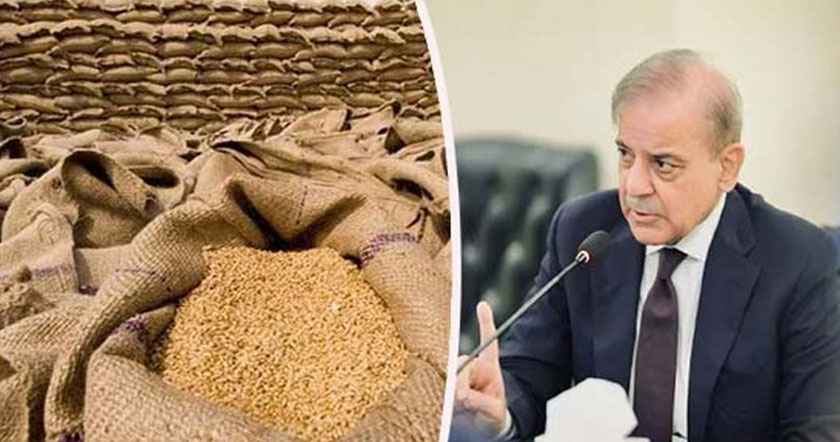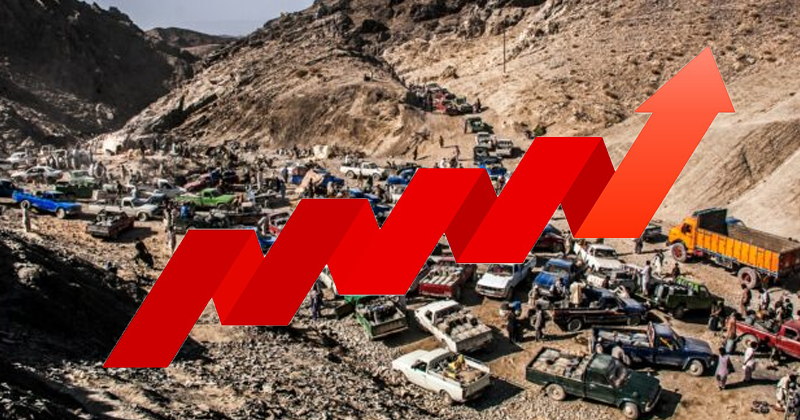Written by: Senge H. Sering (2010): China Builds Dam on Indus near Ladakh, Journal of Defence Studies, Vol. 4, No. 2, page 136.
About Writer: Senge H. Sering
Mr. Senge Sering has a Masters in Development Studies from the University of East Anglia, and is currently a visiting scholar at IDSA, New Delhi.
Other Articles written by him:
Constitutional Impasse in Gilgit-Baltistan (Jammu and Kashmir): The Fallout, May 2010
Pakistans Double Standard on Kashmir makes Indo-Pak CBMs Counter-productive, January 28, 2010
Talibanization of Gilgit-Baltistan and Sectarian Killings, October 19, 2009
Reclaiming Nubra Locals Shunning Pakistani Influences, August 17, 2009
Abstract: The tail-end of Indus receives so little water that today Sindh's agriculture faces extinction. Further reduction of water will increase salinity, land erosion and sea-flooding that will severely damage the Indus delta. As a consequence, rise in water table may flood cities like Karachi and Thattha. The impact of water shortage on aquatic wildlife will be detrimental. While Pakistan is building two mega dams of Diamer and Bunji on the Indus in occupied Gilgit-Baltistan, the Chinese dam will cause water shortage for similar mega hydroelectric projects including the existing Tarbela dam that also lies on Indus.
China has built a medium scale dam near Demchok, Ladakh on the River Indus.The Indus, after passing through Ladakh, Gilgit and Baltistan districts of J&K, flows through Pakistani plains and finally drains into the Indian Ocean near Thattha. The dam was located by Alice Albinia, a British journalist and author of the book 'Empires of the Indus', while tracking the source of Indus in Tibet. Except for hydroelectric installation, the structure, which has apparently stopped most of the river flow, is complete. Initially, it will generate eleven megawatts of electricity; however, given its storage capacity and gradient factor, power generation can reach well over double the initial output.
Indus is one of the longest rivers in Asia with a length of 3,180 kilometers, and 21st in the world given its annual flow and drainage area, which exceeds 1,165,000 sq. km. For thousands of years, the Indus Valley civilization has flourished and evolved along her banks. Experts believe that the dam will threaten the inhabitants and their livelihoods along the Indus in Punjab and Sindh, which are heavily dependent on the river for irrigation and energy needs. The tail-end of Indus receives so little water that today Sindh's agriculture faces extinction. Further reduction of water will increase salinity, land erosion and sea-flooding that will severely damage the Indus delta. As a consequence, rise in water table may flood cities like Karachi and Thattha. The impact of water shortage on aquatic wildlife will be detrimental. While Pakistan is building two mega dams of Diamer and Bunji on the Indus in occupied Gilgit-Baltistan, the Chinese dam will cause water shortage for similar mega hydroelectric projects including the existing Tarbela dam that also lies on Indus.
"One can only hope that Chinese intentions are benign and geared towards tourism promotion. The dam is very far from KailashMansrovar and will largely cater to the needs of the expanding military city near Ladakh, which raises concerns in India."
Mr. Idris Rajput, former secretary of Sindh irrigation department, claims that the dam could only be used for power generation. Ngari, Aksai-Chin and eastern Ladakh are situated above the 'tree line' at more than 13,000 feet above mean sea level; hence, using dam water for irrigation and agriculture will be quite impractical. Although Mr. Rajput realizes the negative impacts of this project on Pakistan, he and other officials are cautious to criticize China - the military ally of Pakistan which completed the scheme with no prior warning. Under circumstances, when Pakistan sees itself on the verge of a financial collapse and fights looming civil war that can cause her disintegration; Chinese support is deemed necessary to offset such threats. Further, both countries do not have a treaty over shared waters, and therefore, Pakistan cannot retaliate to Chinese advances, as it continues to exploit Indus at Pakistan and India's expense.
Ali town (Gar), on extreme left of the picture, is a major military settlement. River Indus bisects the town as it flows out of the newly built dam, which can be seen on the right. Vastness of empty space around Ali shows the capacity of this town to expand manifolds.The dam is only a few miles eastward of Ali, which is the capital of Ngari prefecture (Pop: 69,000) of Tibet Autonomous Region (TAR). Ali, called Gar in Tibetan, is also the capital of Gar County that borders Aksai-Chin and Demchok areas of Ladakh. The town is strategically located on the Tibet-Xinjiang Highway and oversees trade and transit between TAR, Ladakh and East Turkestan. The highway is an alternative supply route to complement supplies from Lhasa and Golmud to Ladakh border. Further, Ali is the Chinese command base to manage troops on the border with Ladakh, Aksai-Chin, Himachal Pradesh, Uttaranchal and Nepal. Professor Stobdan of IDSA states that the dam is built to enhance tourism in Ngari. Further, China is also building an international airport at Ali which will be inaugurated next year. Ngari is home to Mount Kailash, which is a favorite destination for both religious and adventure tourists. After the 1962 Indo-China war, tourism in Ngari saw a downfall, but has been making a comeback in recent years.
"When Pakistan sees itself on the verge of a financial collapse and fights looming civil war that can cause her disintegration; Chinese support is deemed necessary to offset such threats."
One can only hope that Chinese intentions are benign and geared towards tourism promotion. The dam is very far from Kailash-Mansrovar and will largely cater to the needs of the expanding military city near Ladakh, which raises concerns in India. Ideally, a dam near Purang, in the vicinity of Mount Kailash could have allowed greater power generation capacity to support tourism while offering comparatively milder climatic conditions. With Ali accommodating more than 20,000primarily Han soldiers, the dam will hardly benefit native Tibetan nomads, who roam across the plateau with their yaks and sheep and would not live in sedentary towns. The dam will allow expansion of Ali to accommodate much larger troop numbers on a permanent basis considerably reducing logistical costs to China. The arrival of more Hans, as soldiers and labourers, whom the Tibetans despise and see as 'State apparatus' of ethnic cleansing and demographic change, will destabilize the society. The international airport may well bring tourists at the moment but will also provide support to the Chinese air force in time of need.
The dam affects India adversely as Tibetan rivers provide energy and irrigation water for its large agrarian population. Apart from Ladakh, Gilgit-Baltistan will face a water shortfall and reduced power generation resource. Worries for India do not end here. After realizing the potential of a dam on Indus, China can build other dams on River Sutlej and Yarlung Tsangpo. Sutlej River is a major source of power generation and irrigation for Himachal Pradesh, Punjab, Haryana and Rajasthan. India and China don't have a water treaty, which can impact India's leverage to stop China from water theft. The environmental impact, in case any of these dams burst, is also very grave and can cause havoc in the Indian plains. Studies should be carried out to assess the impact of such projects on the Tibetan plateau which is one of the most fragile ecosystems of the world.
About Institute of Defence Studies and Analysis: IDSA was established as a registered society in New Delhi on November 11, 1965. Its mission was to provide objective assessments of issues relating to national and international security. The initiative for setting up the Institute came from then Defence Minister Shri Yeshwantrao Chavan, who was one of the Institutes founding members. Over the last forty-plus years, IDSA has played a crucial role in shaping Indias foreign and security policies, including with respect to nuclear weapons, military expenditure, and conventional and non-conventional threats to India.
Web Sources:
http://www.idsa.in/system/files/jds_4_2_shsering.pdf
http://www.unpo.org/article/11678
http://www.idsa.in/
http://www.idsa.in/taxonomy/term/839
http://www.gilgitbaltistan.us/Analyses/china-builds-dam-on-indus-near-ladakh-by-senge-h-sering.html
About Writer: Senge H. Sering
Mr. Senge Sering has a Masters in Development Studies from the University of East Anglia, and is currently a visiting scholar at IDSA, New Delhi.
Other Articles written by him:
Constitutional Impasse in Gilgit-Baltistan (Jammu and Kashmir): The Fallout, May 2010
Pakistans Double Standard on Kashmir makes Indo-Pak CBMs Counter-productive, January 28, 2010
Talibanization of Gilgit-Baltistan and Sectarian Killings, October 19, 2009
Reclaiming Nubra Locals Shunning Pakistani Influences, August 17, 2009
Abstract: The tail-end of Indus receives so little water that today Sindh's agriculture faces extinction. Further reduction of water will increase salinity, land erosion and sea-flooding that will severely damage the Indus delta. As a consequence, rise in water table may flood cities like Karachi and Thattha. The impact of water shortage on aquatic wildlife will be detrimental. While Pakistan is building two mega dams of Diamer and Bunji on the Indus in occupied Gilgit-Baltistan, the Chinese dam will cause water shortage for similar mega hydroelectric projects including the existing Tarbela dam that also lies on Indus.
China has built a medium scale dam near Demchok, Ladakh on the River Indus.The Indus, after passing through Ladakh, Gilgit and Baltistan districts of J&K, flows through Pakistani plains and finally drains into the Indian Ocean near Thattha. The dam was located by Alice Albinia, a British journalist and author of the book 'Empires of the Indus', while tracking the source of Indus in Tibet. Except for hydroelectric installation, the structure, which has apparently stopped most of the river flow, is complete. Initially, it will generate eleven megawatts of electricity; however, given its storage capacity and gradient factor, power generation can reach well over double the initial output.
Indus is one of the longest rivers in Asia with a length of 3,180 kilometers, and 21st in the world given its annual flow and drainage area, which exceeds 1,165,000 sq. km. For thousands of years, the Indus Valley civilization has flourished and evolved along her banks. Experts believe that the dam will threaten the inhabitants and their livelihoods along the Indus in Punjab and Sindh, which are heavily dependent on the river for irrigation and energy needs. The tail-end of Indus receives so little water that today Sindh's agriculture faces extinction. Further reduction of water will increase salinity, land erosion and sea-flooding that will severely damage the Indus delta. As a consequence, rise in water table may flood cities like Karachi and Thattha. The impact of water shortage on aquatic wildlife will be detrimental. While Pakistan is building two mega dams of Diamer and Bunji on the Indus in occupied Gilgit-Baltistan, the Chinese dam will cause water shortage for similar mega hydroelectric projects including the existing Tarbela dam that also lies on Indus.
"One can only hope that Chinese intentions are benign and geared towards tourism promotion. The dam is very far from KailashMansrovar and will largely cater to the needs of the expanding military city near Ladakh, which raises concerns in India."
Mr. Idris Rajput, former secretary of Sindh irrigation department, claims that the dam could only be used for power generation. Ngari, Aksai-Chin and eastern Ladakh are situated above the 'tree line' at more than 13,000 feet above mean sea level; hence, using dam water for irrigation and agriculture will be quite impractical. Although Mr. Rajput realizes the negative impacts of this project on Pakistan, he and other officials are cautious to criticize China - the military ally of Pakistan which completed the scheme with no prior warning. Under circumstances, when Pakistan sees itself on the verge of a financial collapse and fights looming civil war that can cause her disintegration; Chinese support is deemed necessary to offset such threats. Further, both countries do not have a treaty over shared waters, and therefore, Pakistan cannot retaliate to Chinese advances, as it continues to exploit Indus at Pakistan and India's expense.
Ali town (Gar), on extreme left of the picture, is a major military settlement. River Indus bisects the town as it flows out of the newly built dam, which can be seen on the right. Vastness of empty space around Ali shows the capacity of this town to expand manifolds.The dam is only a few miles eastward of Ali, which is the capital of Ngari prefecture (Pop: 69,000) of Tibet Autonomous Region (TAR). Ali, called Gar in Tibetan, is also the capital of Gar County that borders Aksai-Chin and Demchok areas of Ladakh. The town is strategically located on the Tibet-Xinjiang Highway and oversees trade and transit between TAR, Ladakh and East Turkestan. The highway is an alternative supply route to complement supplies from Lhasa and Golmud to Ladakh border. Further, Ali is the Chinese command base to manage troops on the border with Ladakh, Aksai-Chin, Himachal Pradesh, Uttaranchal and Nepal. Professor Stobdan of IDSA states that the dam is built to enhance tourism in Ngari. Further, China is also building an international airport at Ali which will be inaugurated next year. Ngari is home to Mount Kailash, which is a favorite destination for both religious and adventure tourists. After the 1962 Indo-China war, tourism in Ngari saw a downfall, but has been making a comeback in recent years.
"When Pakistan sees itself on the verge of a financial collapse and fights looming civil war that can cause her disintegration; Chinese support is deemed necessary to offset such threats."
One can only hope that Chinese intentions are benign and geared towards tourism promotion. The dam is very far from Kailash-Mansrovar and will largely cater to the needs of the expanding military city near Ladakh, which raises concerns in India. Ideally, a dam near Purang, in the vicinity of Mount Kailash could have allowed greater power generation capacity to support tourism while offering comparatively milder climatic conditions. With Ali accommodating more than 20,000primarily Han soldiers, the dam will hardly benefit native Tibetan nomads, who roam across the plateau with their yaks and sheep and would not live in sedentary towns. The dam will allow expansion of Ali to accommodate much larger troop numbers on a permanent basis considerably reducing logistical costs to China. The arrival of more Hans, as soldiers and labourers, whom the Tibetans despise and see as 'State apparatus' of ethnic cleansing and demographic change, will destabilize the society. The international airport may well bring tourists at the moment but will also provide support to the Chinese air force in time of need.
The dam affects India adversely as Tibetan rivers provide energy and irrigation water for its large agrarian population. Apart from Ladakh, Gilgit-Baltistan will face a water shortfall and reduced power generation resource. Worries for India do not end here. After realizing the potential of a dam on Indus, China can build other dams on River Sutlej and Yarlung Tsangpo. Sutlej River is a major source of power generation and irrigation for Himachal Pradesh, Punjab, Haryana and Rajasthan. India and China don't have a water treaty, which can impact India's leverage to stop China from water theft. The environmental impact, in case any of these dams burst, is also very grave and can cause havoc in the Indian plains. Studies should be carried out to assess the impact of such projects on the Tibetan plateau which is one of the most fragile ecosystems of the world.
About Institute of Defence Studies and Analysis: IDSA was established as a registered society in New Delhi on November 11, 1965. Its mission was to provide objective assessments of issues relating to national and international security. The initiative for setting up the Institute came from then Defence Minister Shri Yeshwantrao Chavan, who was one of the Institutes founding members. Over the last forty-plus years, IDSA has played a crucial role in shaping Indias foreign and security policies, including with respect to nuclear weapons, military expenditure, and conventional and non-conventional threats to India.
Web Sources:
http://www.idsa.in/system/files/jds_4_2_shsering.pdf
http://www.unpo.org/article/11678
http://www.idsa.in/
http://www.idsa.in/taxonomy/term/839
http://www.gilgitbaltistan.us/Analyses/china-builds-dam-on-indus-near-ladakh-by-senge-h-sering.html
































